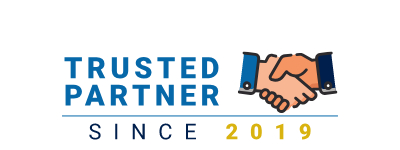Overview of the Client
Our client is an American worldwide manufacturer, marketer, and distributor of consumer and commercial products with an extensive portfolio of brands. They employ over 30,000 people across the globe with a distribution network that caters to the world.

Business Challenges and Objectives
- The client currently uses different visualization tools for different operational reports.
- In their existing system, the data was taken from SAP APO on a weekly and monthly basis which was populated into the Forecast Metrics.
- In the new system, the client required that the data from SAP IBP should also be used for the Forecast Metrics Power BI report.
- The client wanted a bi-weekly waterfall report to compare the forecast and the actuals of the previous twelve months and the rolling twelve months from these reports.
- They wanted to track the incoming inventory of the second plant while it is in transit and create the respective distribution receipts/details in the first plant.
- The planners required the ability to see the accurate status of a material and plan accordingly.
- They wanted the ability to visualize a time-dependent status of materials for better planning.
- The client wanted a system in accordance with other tools, enabling the planning team to measure the forecasting performance in a standard way.
- The client also wanted to capture and improve the Weighted Forecast Accuracy (WFA) and reduce the bias trend insights by identifying the root cause and suggest respective changes to the planning process.
- They looked to incorporate this analysis into the Demand Planning Framework to fine-tune the demand outlook.
The Solution
- The TekLink Team analyzed the existing business processes for change movements, architecture, and the overall system.
- The team analyzed and identified the enhancements required in the client’s existing SQL DW modeling views, Azure Analysis Service (AAS) models, and the Power BI reports.
- We combined several data sources from many SQL views based on the requirements, which serves as the data source for AAS table partitions.
- The team tested the Data Warehouse (DW) objects using SQL to ensure data population into the AAS model and Power BI.
- We created tables, dynamic partitions, calculated tables, calculated groups, and dynamic measures on AAS Models.
- The team created dynamic measures, bookmarks, Power BI Slicers, and visualizations.
- We created an optimized model that can hold vast amounts of data using the optimal partitioning strategy, reducing query time, improving Data Analysis eXpressions (DAX) measures.
- We created Power BI reports so that fewer AAS resources are utilized to serve the data.
We also made the provision to use excel when directly connected to AAS models.
Key Benefits
- Unified reporting helps the business to plan in a single place using just one tool.
- Ability to plan better by keeping a check on the demand forecast materials.
- Ability to quickly analyze the difference in the actuals from the current year to the previous year for more accurate forecasts.
- The new system helps the client identify the under-forecasted and over-forecasted materials.
- The Demand Forecast Waterfall (DFW) tab, in the Weekly Forecast Metrics Report, is one of the tools that help the demand planner keep the attainment (Ability to meet the forecast) in check.
- The DFW tab helps the client compare the changing monthly demand by using the snapshots of week 1 and week 3 forecasts.
- The Monthly Reports allow the planner to drill down and plan at Business Units, Plant, Material, Customer, Sales Region, and many others.
- The reports help the planner to measure and compare various KPIs over time.